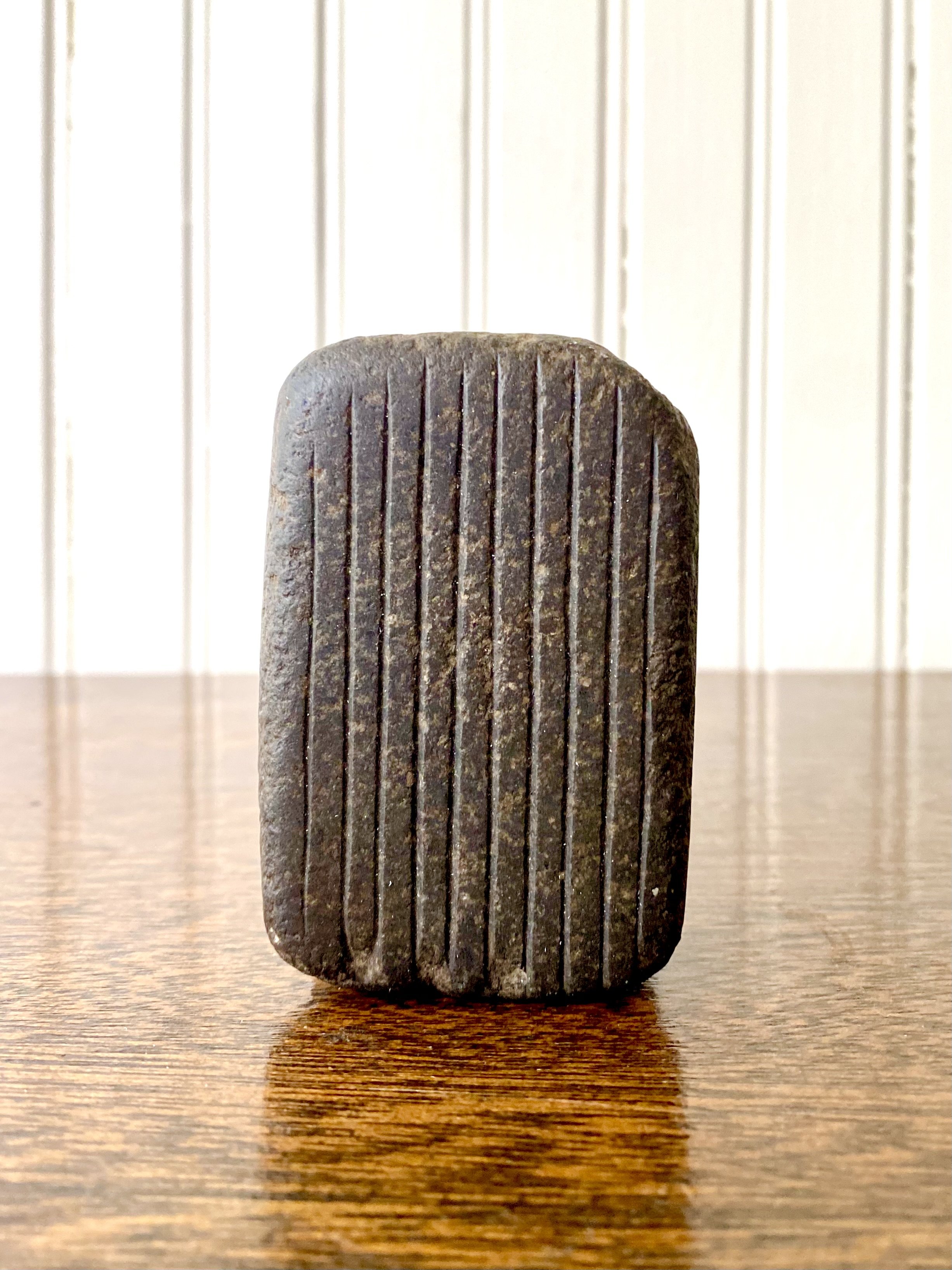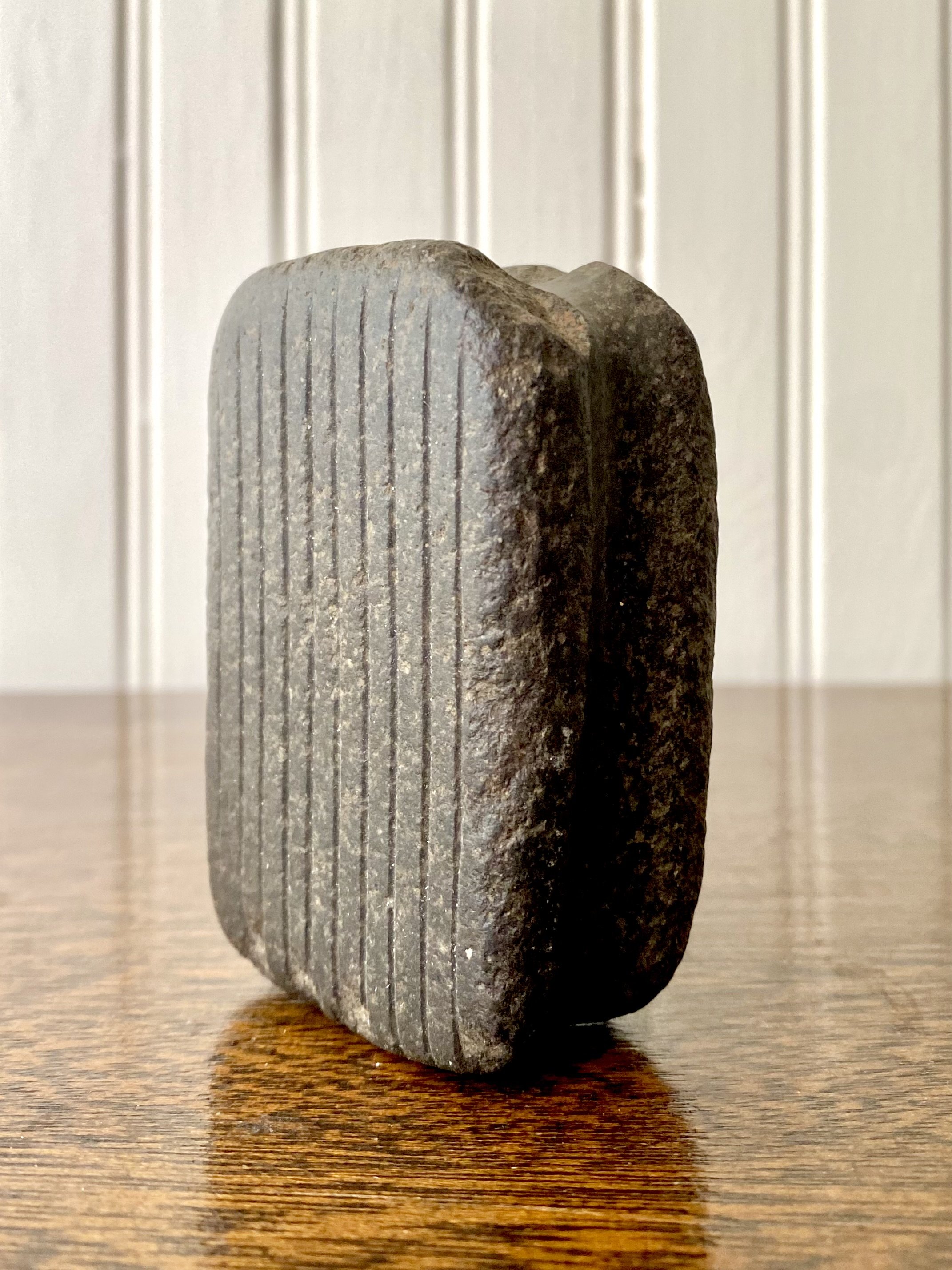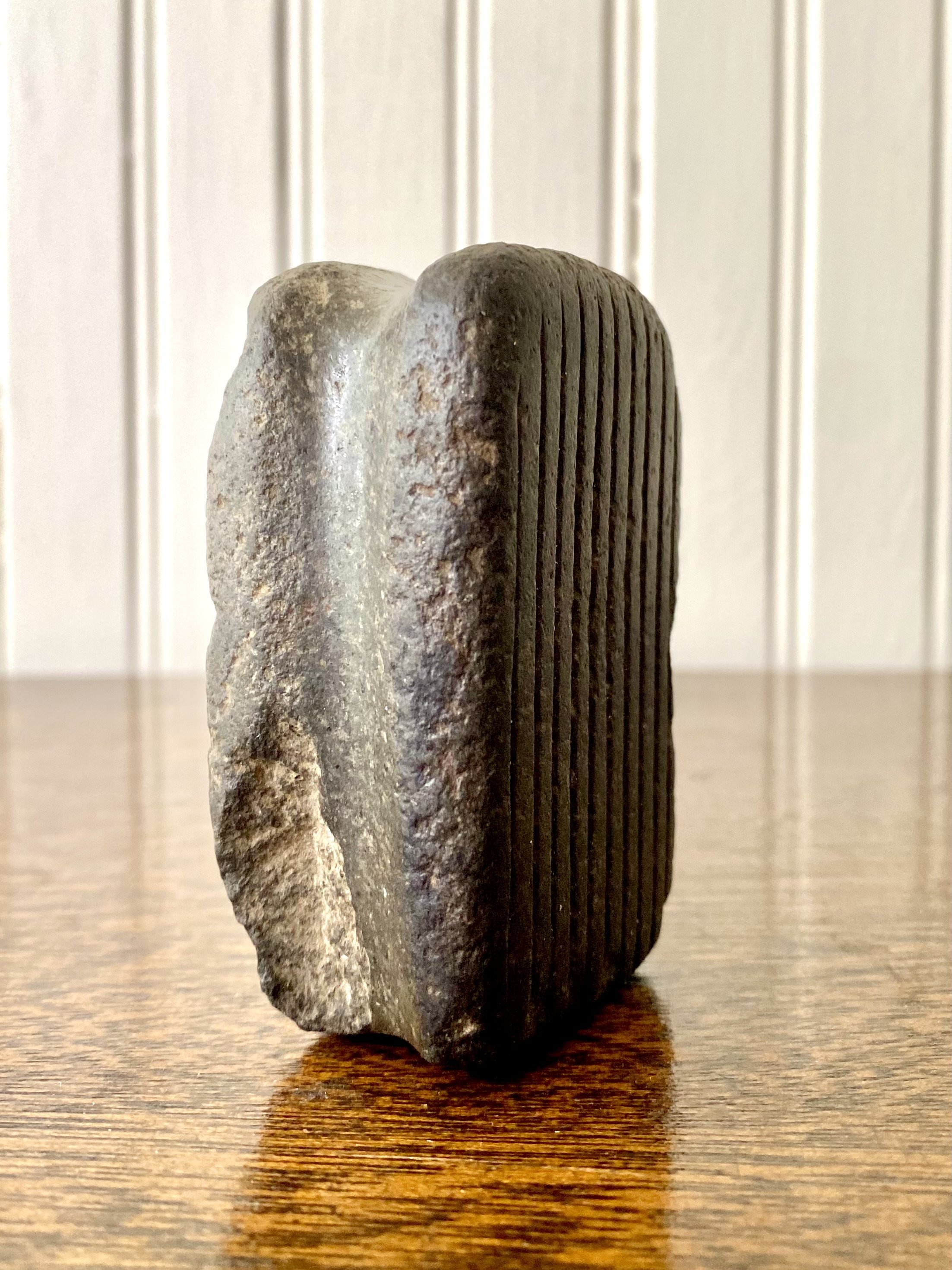 Image 1 of 4
Image 1 of 4

 Image 2 of 4
Image 2 of 4

 Image 3 of 4
Image 3 of 4

 Image 4 of 4
Image 4 of 4





Mesoamerican Bark Beater
This unprepossessing object is a "bark beater," a hammer stone used for pounding plant material to make paper for clothing, shelter, books, etc. This one is from Mexico or Central America, but similar tools were used elsewhere in the ancient world. It was hafted by wrapping a thin cane all the way around the stone. Typically, the pounded and separated plant fibers would be soaked in water to create a matted slurry, then flattened, dried, and perhaps mixed with some kind of fixative or coating. It is not certain what the ancient peoples of the Americas did with paper, since so few artifacts survive. Perhaps they made kites, or ceremonial panels like the tapa cloths of Polynesia.
But one thing is certain: they wrote books. Marvelous illuminated books, of which only a few survive. The last image is a page from the Códice Maya de México, an illuminated manuscript created circa 1100 CE. This astronomical text about the planet Venus was found in a cave in Chiapas, Mexico, and is the oldest surviving manuscript from the Americas. Only three other Mayan manuscripts are known to exist: the Dresden, Madrid, and Paris codices. All others were destroyed by the Catholic Church in the early years of the Conquest.
This unprepossessing object is a "bark beater," a hammer stone used for pounding plant material to make paper for clothing, shelter, books, etc. This one is from Mexico or Central America, but similar tools were used elsewhere in the ancient world. It was hafted by wrapping a thin cane all the way around the stone. Typically, the pounded and separated plant fibers would be soaked in water to create a matted slurry, then flattened, dried, and perhaps mixed with some kind of fixative or coating. It is not certain what the ancient peoples of the Americas did with paper, since so few artifacts survive. Perhaps they made kites, or ceremonial panels like the tapa cloths of Polynesia.
But one thing is certain: they wrote books. Marvelous illuminated books, of which only a few survive. The last image is a page from the Códice Maya de México, an illuminated manuscript created circa 1100 CE. This astronomical text about the planet Venus was found in a cave in Chiapas, Mexico, and is the oldest surviving manuscript from the Americas. Only three other Mayan manuscripts are known to exist: the Dresden, Madrid, and Paris codices. All others were destroyed by the Catholic Church in the early years of the Conquest.